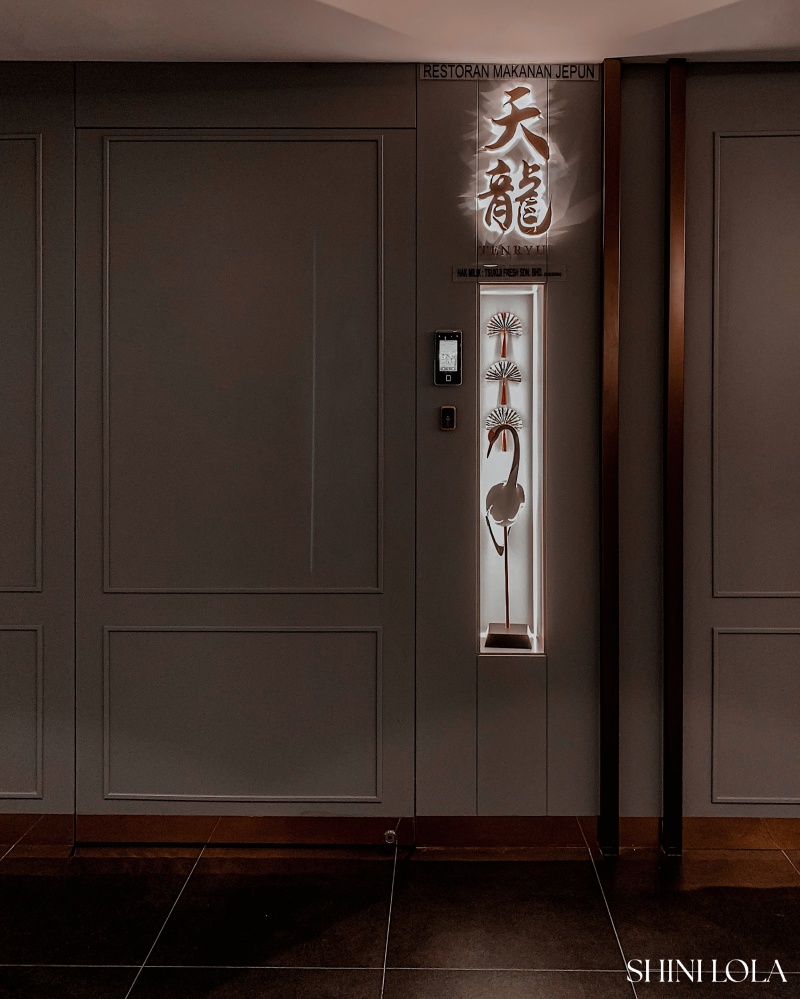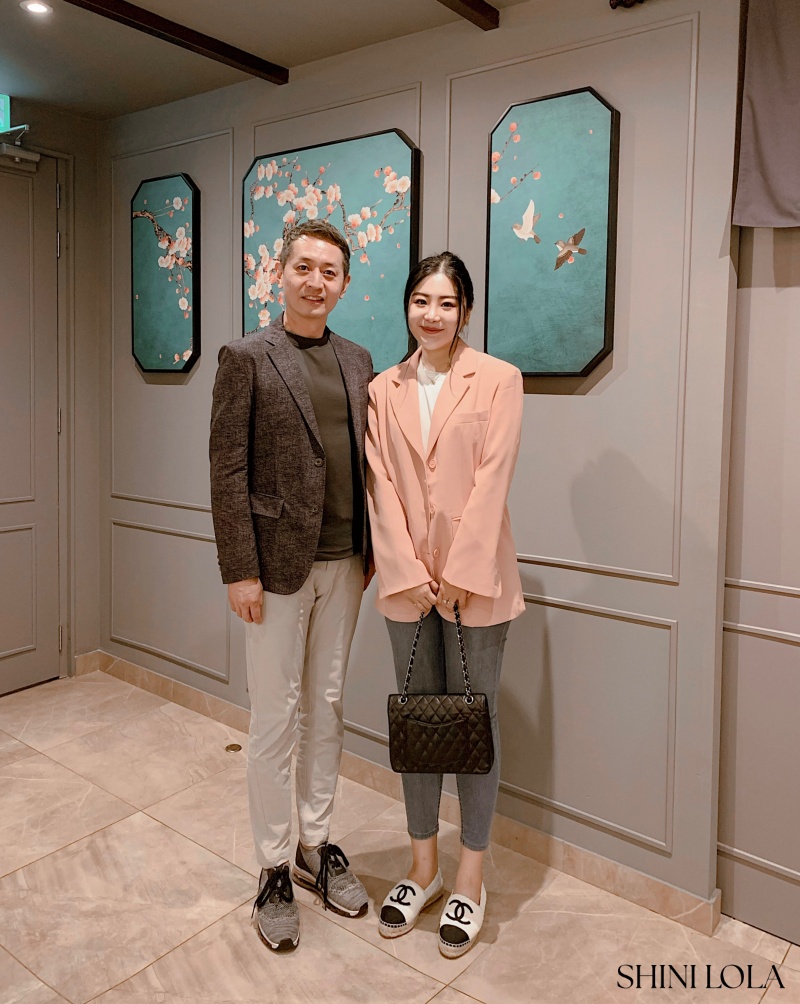Konnichiwa~ Today's post delves into the world of omakase once again. It's a case of "same same but different". This time, I had my first taste of kappo omakase at Tenryu which is located in Wisma Lim Foo Yong. So, what sets it apart? In terms of concept, both words denote a multi-course Japanese dining journey led by the chef. Typically, omakase is linked with sushi (and occasionally tempura) establishments, while kappo encompasses a wider array of dishes. Intrigued to discover more about my inaugural kappo omakase experience? Read on to learn more.
About TenRyu 天龍
TenRyu is an exceptional Japanese restaurant that brings together the best of traditional Japanese cuisine with a touch of molecular gastronomy. Founded with the vision to offer an all-encompassing experience in premium Japanese dining in Malaysia, TenRyu introduces Kappo-style cuisine, an art of cutting, boiling, stewing, and frying. Inspired by Master Chef Otomo Shinsuke, the restaurant's signature dish, the Dry-Aged Fish, is prepared using a secret recipe.
Situated at Wisma Lim Foo Yong in the heart of the Golden Triangle district, TenRyu is conveniently close to Kuala Lumpur's iconic landmarks like KLCC, KL Tower, and the bustling Bukit Bintang area. The restaurant provides an elegant and sophisticated ambience, making it an ideal choice for special dining occasions or business functions.
Executive Chef Otomo Shinsuke 大友慎介
Just as mentioned, the Kappo-style cuisine, which focuses on techniques like cutting, boiling, stewing, and frying, draws inspiration from the culinary mastery of Master Chef Otomo Shinsuke. Kappo-style dining showcases an open kitchen concept, enabling diners to not only relish the preparation of their dishes but also engage in conversation with the chef. This style of dining emphasizes the appreciation of the inherent flavours of ingredients, the quality of seasonal produce, and the chef's exceptional culinary expertise in a vibrant atmosphere.
My Kappo Omakase Experience
Aged Tuna . Caviar
I apologize for not recalling much about our appetizer. I was engrossed in conversation with our esteemed guest, a Michelin-starred chef, to be precise. All I can recollect is the delectable flavours of aged tuna and caviar.
Beer
The chef suggested that the appetizer should be paired with beer, and so we followed his recommendation, with a good laugh.
Yari Ika . Uni . Caviar . Shiso Flowers
Yari Ika (from Nagasaki), also referred to as Spear Squid is a species known for its relatively thin flesh that is tender and sweet. These squids are primarily caught in Japan during the winter and spring seasons along the shores of various prefectures.
Shiso flowers, known as hana hojiso, are often utilized as a garnish for sashimi dishes.
Hokkaido Uni
The uni that they serving is from Murasaki. Japan's northern island of Hokkaido is renowned for its sea urchin (uni) that thrives on the pure and pristine kelp in the surrounding waters. This diet contributes to the uni's distinctive and intense umami flavour.
The chef advised that the other dishes should be accompanied by sake. They even gave us the freedom to select the sake cups we preferred from a diverse array. I found this sake cup selection experience to be a delightful personal touch.
Iwashi
Iwashi, also known as sardines, hails from Japan and is classified as a hikarimono, a group of fish known for their shiny skin. The peak season for iwashi is typically from August to November. These fish are exceptionally rich in Omega-3 fatty acids and are often enjoyed as a perfect pairing with sake.
Kuromutsu
Kuromutsu is a Japanese Blue Fish from Nagasaki. The bluefish, a deep-sea fish from Japan, resides at depths of around 2,000 feet. It is a type of sashimi fish with a high-fat content and a clean, pleasing texture. During this season, bluefish tend to have a substantial amount of fat, resulting in a sweet and delectable taste. Besides being ideal for sashimi, it can also be used for making delicious sushi.
Served with truffle flakes, ponzu and shitake mushroom.
Kisu . Soramame
Kisu fish, commonly referred to as Japanese whiting, is a small and delectable marine species found in the coastal waters of East Asia. Among hikarimono fish, it is the leanest, with exceptionally low-fat content, sometimes as low as 1%.
Served with ume (plum sauce), soramame, and matcha powder. Broad beans, known as Fava beans in English and Soramame in Japanese, are considered a special springtime delicacy. This dish offers a complex array of flavours with multiple layers.
Agedashi Goma Tofu . Takenoko Bamboo
Crispy deep-fried tofu served in a flavorful umami sauce, Agedashi Tofu is a popular appetizer you can find at izakaya and Japanese restaurants. It requires deep-frying, but the process is easier than you think. Takenoko, which literally means the bamboo's child, refers to the edible young bamboo shoots that rapidly grow from the ground. These shoots have tightly overlapping fibrous layers, forming a cylindrical, cone-shaped bulb. Newly sprouted takenoko have a firm and crispy texture.
Cold Chanwamushi . Junsai
Truth be told, it was my initial experience with cold chawanmushi, and I found it intriguing. Nevertheless, I must admit that I still have a personal preference for the hot temperature version.
Junsai, often referred to as a water shield in English, is a perennial aquatic plant with edible buds that are considered a delicacy in Japanese cuisine.
Suzuki
Suzuki, known as the Japanese sea bass, is a delightful and flavorful shiromi fish that's especially popular in the summertime. Its belly boasts a high-fat content, resulting in incredibly tender and soft meat. In contrast, other parts of the fish offer slightly firmer and chewier textures.
Regardless of the cut, Suzuki has a harmonious flavour profile that's sweet, bold, yet light and refreshing. It's typically served with ume sauce, which complements its taste beautifully.
Hokkigai
Arctic surf clams or Hokkigai are exceptionally suited for sushi and other Asian cuisine. they offer a beautiful rose / white colouration, mild aroma and very juicy texture with a slight crunch and fresh, distinguished taste.
Uni temaki
Uni temaki is a type of hand-rolled sushi, often referred to as a temaki roll, that features sea urchin as its primary ingredient. The creation of uni temaki involves placing a small portion of fresh, creamy, and briny uni onto a sheet of nori (seaweed) and then adding other complementary ingredients. Served with sushi rice, slices of fish, cucumber, and a touch of wasabi for added flavour.
Otoro
Otoro, located on the underside of the tuna, is renowned for being the most luscious and fatty section of the fish. Bluefin tuna, known for their size and strength as magnificent swimmers, boast dark red meat with a luxurious, buttery texture. It happens to be one of my preferred cuts from the tuna.
Tamago
Initially, I mistook it for a slice of cheesecake, but to my surprise, it turned out to be a piece of tamago (Japanese omelet)! What a delightful and petite creation, bursting with flavour.
Bonito Soup . Saba
After completing our sushi course, the chef presented us with a clear bonito soup featuring saba fish. While the broth might appear transparent, its flavour is actually quite rich and robust.
Yomogi . Meron
Yomogi with a white bean paste inside and melon from Shizuoka.
Yomogi mochi, also known as kusa mochi, is crafted using Japanese mugwort, which imparts a green hue to the mochi along with valuable nutritional advantages. Mugwort is sometimes hailed as the queen of herbs and is packed with dietary fibre, chlorophyll, vitamin B1, and vitamin B2.
As it was a business dinner, I had the privilege of hosting the renowned Michelin-starred chef Takuji Takahashi as our guest.
Despite being a master chef from Kyoto, Japan, he exuded remarkable humility and approachability. I eagerly anticipate the opportunity to meet him again in the future.
Menu and Price Range
Lunch
Sakura : RM378
Tsubaki : RM468
Dinner
Yuki : RM598
Tsuki : RM798
Master Chef Special Menu
Price starting from RM1,288++
Details
Location : Lot.101 & 119, 1st Floor, Wisma Lim Foo Yong No, 86, Jalan Raja Chulan, 50200 Wilayah Persekutuan.
Business hours : Mon - Sat (11.30am - 2.30pm ; 6.00pm - 11.00pm) ; Closed on Sunday
Tel : 018-396 1888
Website : https://tenryu-kl.com/
Omakase Related Posts
- Sushi Oribe - Best Omakase in KL : https://www.shinilola.com/2024/02/sushi-oribe-best-omakase-in-kl.html
- Omakase at Sushi Azabu, Isetan The Japan Store : https://www.shinilola.com/2021/04/omakase-at-sushi-azabu-isetan-japan.html
- Hoshun Sushi Kaiseki, Bukit Damansara : https://www.shinilola.com/2021/05/hoshun-sushi-kaiseki-bukit-damansara.html
- Sushi Kazu @ Damansara Heights : https://www.shinilola.com/2021/12/sushi-kazu-damansara-heights.html
- Kame Sushi, Desa Sri Hartamas : https://www.shinilola.com/2022/04/omakase-lunch-at-kame-sushi-desa-sri.html
- Umi Omakase, Bangsar South : https://www.shinilola.com/2022/12/umi-omakase-bangsar-south.html
- Manten Omakase, Rooftop KL Star Residences : https://www.shinilola.com/2023/02/manten-omakase-rooftop-kl-star-residences.html
- Tare Omakase, Ipoh : https://www.shinilola.com/2023/10/tare-omakase-ipoh.html
- Sushi Hibiki, Shoppes at Four Seasons Place : https://www.shinilola.com/2023/10/sushi-hibiki-shoppes-at-four-seasons-place.html


























0 comments